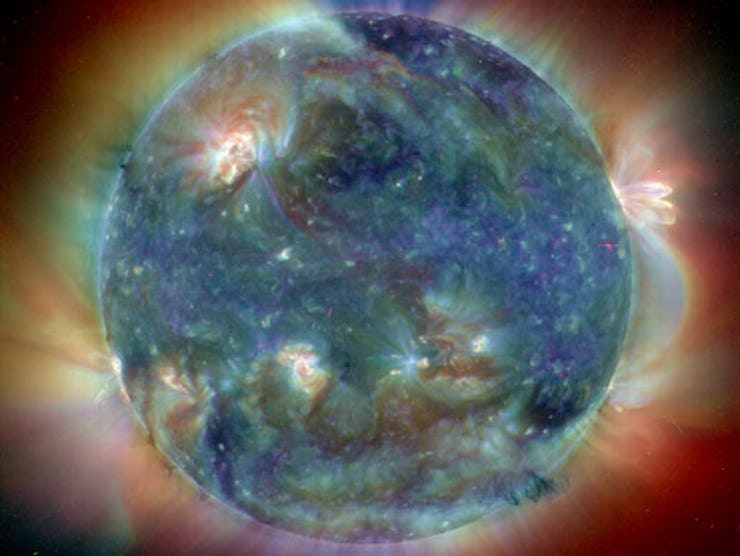Summer solstice explained: Why Saturday is scientifically unique
The season will officially begin this weekend.

This weekend, summer shall officially commence with the celestial event known as the summer solstice.
Saturday, June 20, will mark the longest day of the year as the Earth arrives at a point in its orbit where the North pole is at its maximum tilt towards the Sun, and a day that is used to kick off the summer season. The season will be marked with long days, more sunlight, and shorter nights.
To understand how we arrive at a point where the Sun is seen at its height every day in the Northern Hemisphere, we must first backtrack in order to understand what controls the seasons on Earth.
Understanding the seasons means understanding the Earth's tilted axis. The Earth's axis is an imaginary line that runs through the center of the planet from the top to the bottom and is always tilted 23.5˚ with respect to the Sun. The Northern and Southern Hemispheres trade places every six months: one side receives more direct sunlight and warmth, with either side being a little bit more tilted towards the Sun during those six months.
This illustration shows what happens during the June and December solstice.
The word solstice is Latin for 'Sun stands still,' as the Sun appears to stop moving once it reaches its position in the southern or northernmost part from the equator, and the angle between the Sun's rays and Earth's plane appears to stand still.
The summer solstice typically occurs between June 20 and June 22 when the Sun reaches the northernmost point from the equator.
In Ancient Egypt, the summer solstice also marked the beginning of the new year as it took place at the same time as the rise of the water levels of the Nile River.
When the solstice takes place in the Northern Hemisphere in June, the north pole is tilted towards the Sun, while the south pole is tilted away from the Sun, marking the beginning of Summer for the Northern Hemisphere and the beginning of winter for the Southern Hemisphere.
The opposite takes place during the December solstice, marking the beginning of the winter season in the Northern Hemisphere.
The solstice takes place at the same time for everyone on Earth, kicking off at 9:44 p.m. Universal Time Coordinated or 5:44 p.m. Eastern Time in North America.
In the Northern Hemisphere, it will be marked by the longest day of the year while it will be the shortest day of the year for those in the Southern Hemisphere.
Afterward, the Sun appears to reverse its course and slowly head back in the opposite direction until the next solstice in December, when the Northern Hemisphere will once again be tipped furthest away from the Sun.